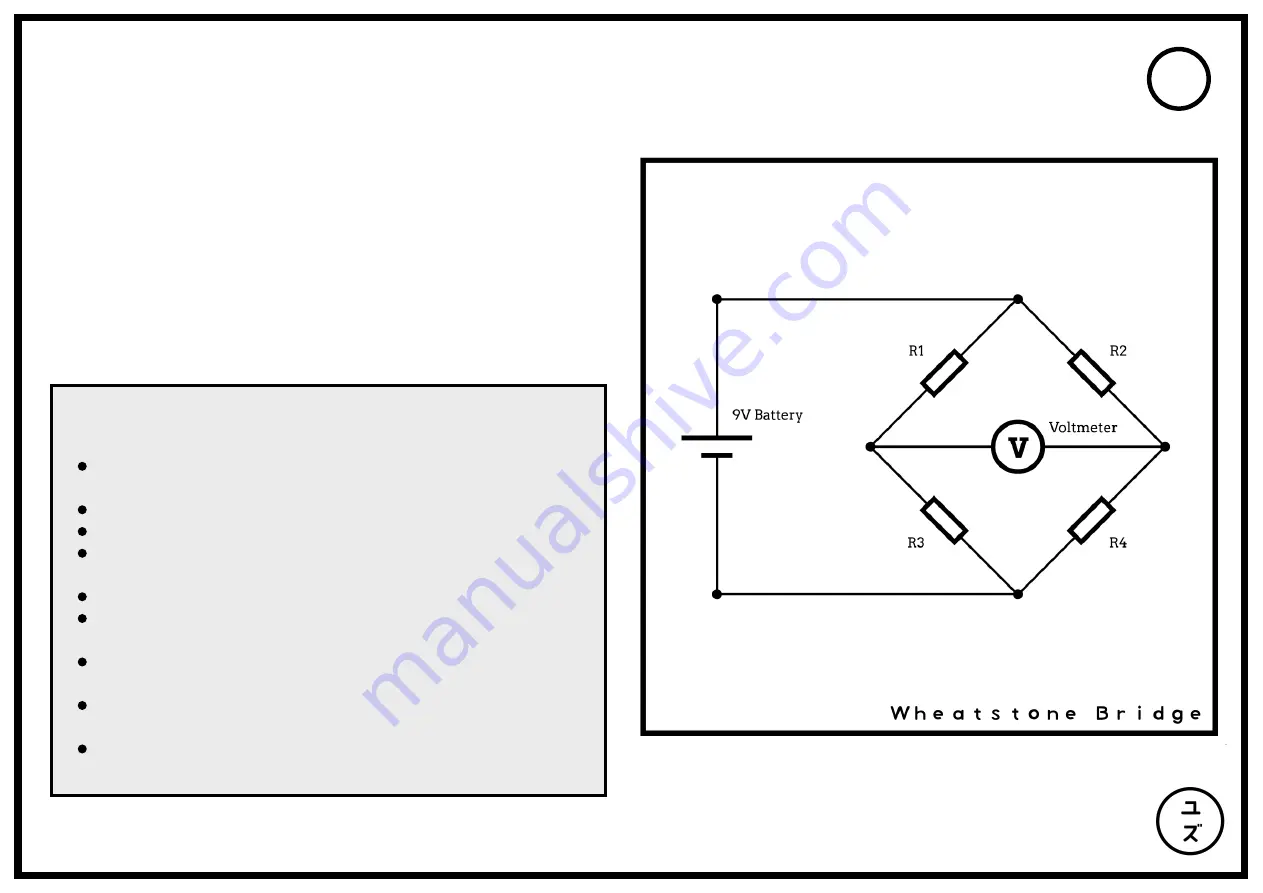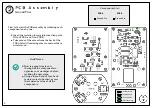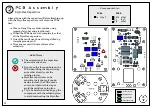
Connect 4 resistors by forming a rhombus pattern as
shown.
Connect the positive side of the battery to R1 and R2.
Connect the negative side of the battery to R3 and R4.
Connect one voltmeter probe to R1/R3 and the other to
R2/R4.
Set the voltmeter to the 20mV DC range.
Read the bridge balance value by swapping R1 until you
find two resistors showing the same balance value.
Place this pair of resistors as R1 and R3 to form a new
reference.
Read the new bridge balance by swapping R2 and R4
until you find two resistors showing a reading of 0mV.
You now have R2 and R4 matched!
~ Method ~
You may find that some circuits require resistors to be
matched to a high degree of precision. In fact, the U87 circuit
falls into that category where R18 and R19 must be matched to
less than 0.4% of each other. Most ohmmeters are not up to the
task and this is where the wheatstone bridge comes into play.
This classic circuit can be used to find matched pairs of
resistors even with a cheap multimeter. You will need a 9V
battery and a bunch of resistors with the same resistance value
and a tolerance of 1% to start with.
Thankfully, the resistors in your kit have already been
matched but you may find it useful to know how to do it.
!
Pro Tip!
Wheatstone Bridge
8









































